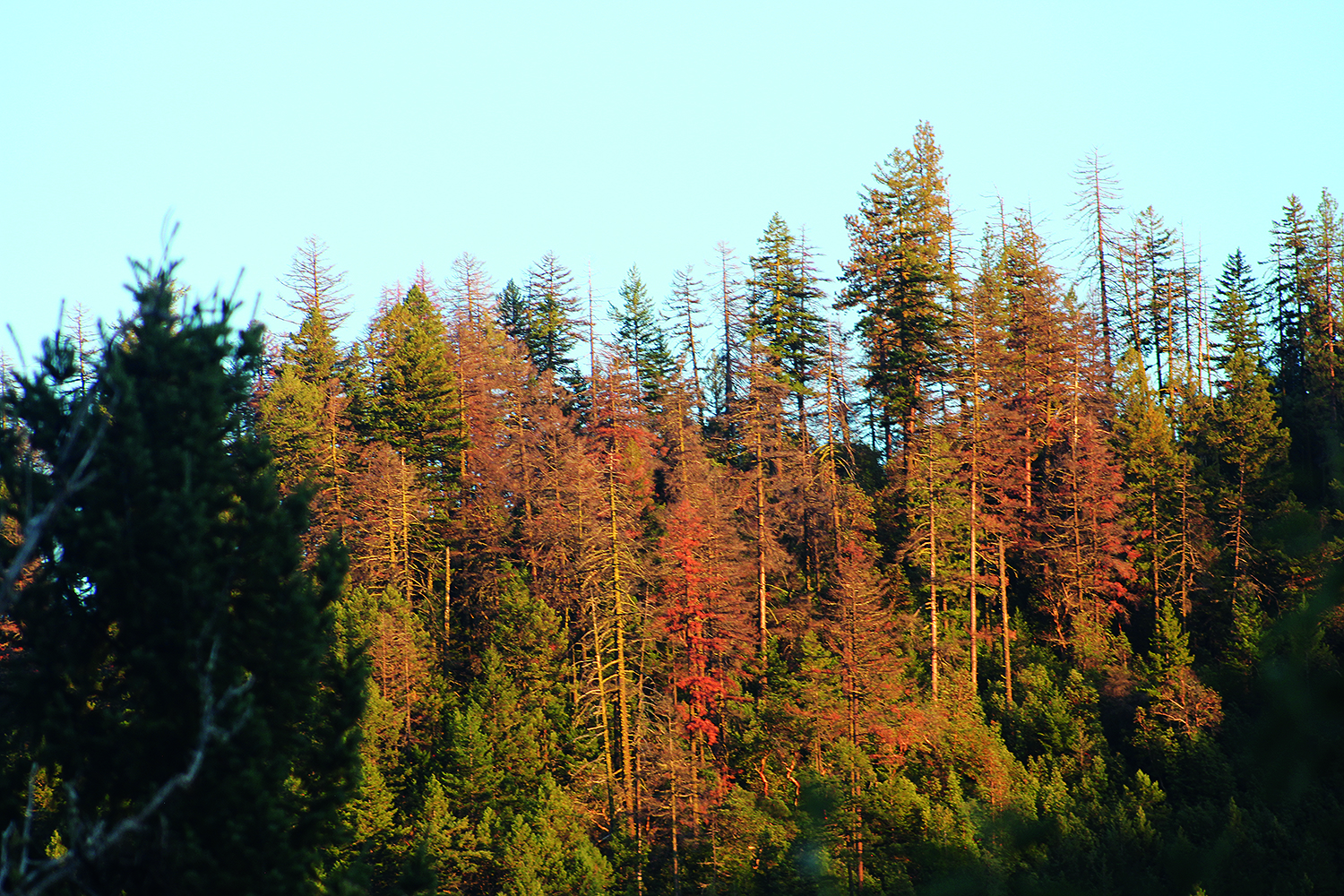By Alan Journet
“Firmageddon” may sound cute, but it identifies a serious problem in the Applegate Valley. Our experience of this condition involves the hundreds of Douglas-fir trees that we can see dying around the valley. Causes for this have been identified as drought, dry atmosphere, and insect borers. The culprit is probably a combination, but underlying these are global warming’s climate change consequences.
When we look at our climate future, we see a continuation of the trends we have been experiencing for that last few decades. A good source for historic data relevant to Jackson and Josephine counties is NOAA (National Oceanographic and Atmospheric Administration), while the USGS (US Geological Survey) provides graphic depictions of future conditions assuming we continue the current trajectory. From these two sources and others we find the following trends and implications.
Trends
Temperature projections, based on the current trajectory, suggest that by the end of the century Jackson County could exhibit an average annual warming of up to 10-15 degrees F above the 1981-2010 average, while Josephine County could experience a warming of up to 7-14.5 degrees F above the same average. Summers are likely to warm more than winters.
Precipitation projections suggest that both counties will experience greater variability between wet and dry years than they have historically, but, on average, no change. Seasonally, however, summers are likely to become dryer and winters wetter. Snowpack projections, assessed in terms of the water content of the snowfall, suggest that Jackson County will experience a decrease of over 90 percent while Josephine County will experience a decrease of over 70 percent.
Finally, the evidence suggests extreme weather in the valley is likely to become a more frequent occurrence.
Implications
Applegate Valley is a rural community where most residents either delight in the natural beauty of the valley and/or make a living in agriculture or forestry. The first concern many of us have is that, should the current climate trajectory continue, our habitats will be devastated. Regrettably, this applies also to our agriculture and forests. Those growing crops know that the same variables of temperature and precipitation determining where natural ecosystems thrive, also determine what crop varietals we can grow. Wine varietals provide an excellent example (socan.eco/the-future-of-fine-wines-in-the-applegate-valley). It is probably of little surprise that the viability of our forest species is determined by the same variables. Just as Douglas firs are now suffering, so will many other tree species suffer in the near future unless we address the problem, collectively and globally. In the meantime, we should adapt to those forthcoming climate trends that are inevitable as best we can.
We know that actions taken by Applegate residents to reduce emissions will not solve the global climate crisis, but we can contribute our share to reducing emissions. We can also take steps to adapt to the changing climate in order to allow Applegaters to thrive and prosper as the future unfolds.
An Applegate effort
Consistent with its efforts to develop a series of regional working groups addressing various issues critical to valley residents, A Greater Applegate (AGA) is collaborating with Southern Oregon Climate Action Now’s Regional and Local Project to establish a Climate Working Group.
The first meeting of this group will be at the Applegate Library, 18485 North Applegate Road, from 5:30-7:30 pm Thursday, April 11. Light refreshments will be provided. At this gathering, we will explore what might be done to address climate change in the Applegate Valley, as well as examine the skills and interests of those present to identify what an AGA Climate Change Working Group might undertake. We hope that you will join us in these efforts.
Alan Journet
Co-facilitator, Southern Oregon Climate Action Now


